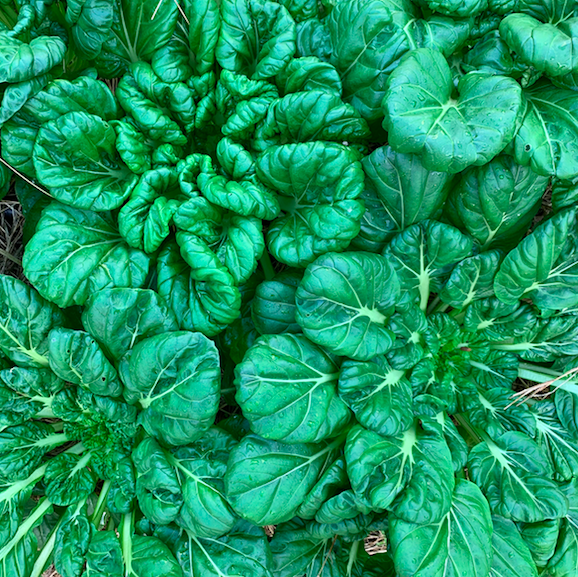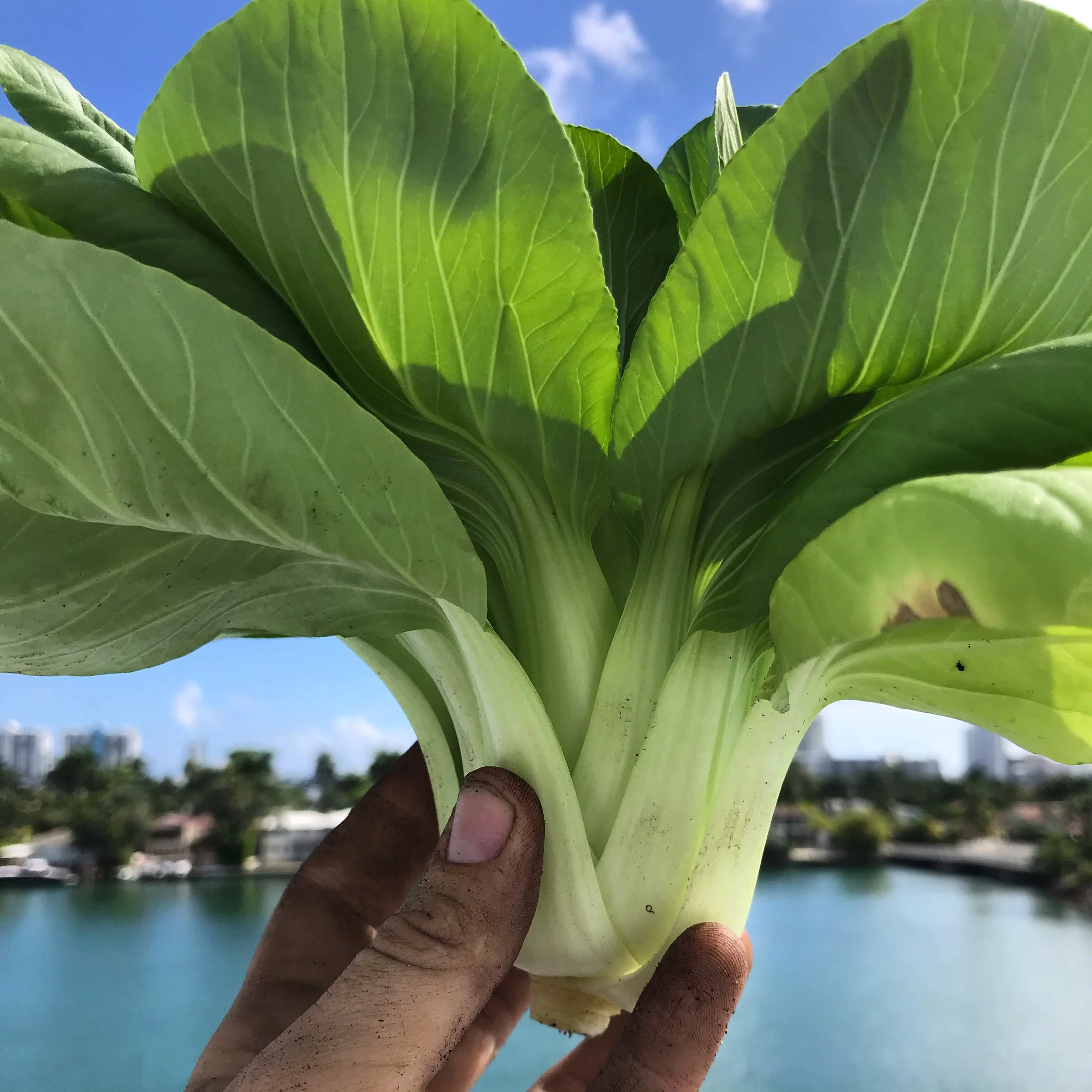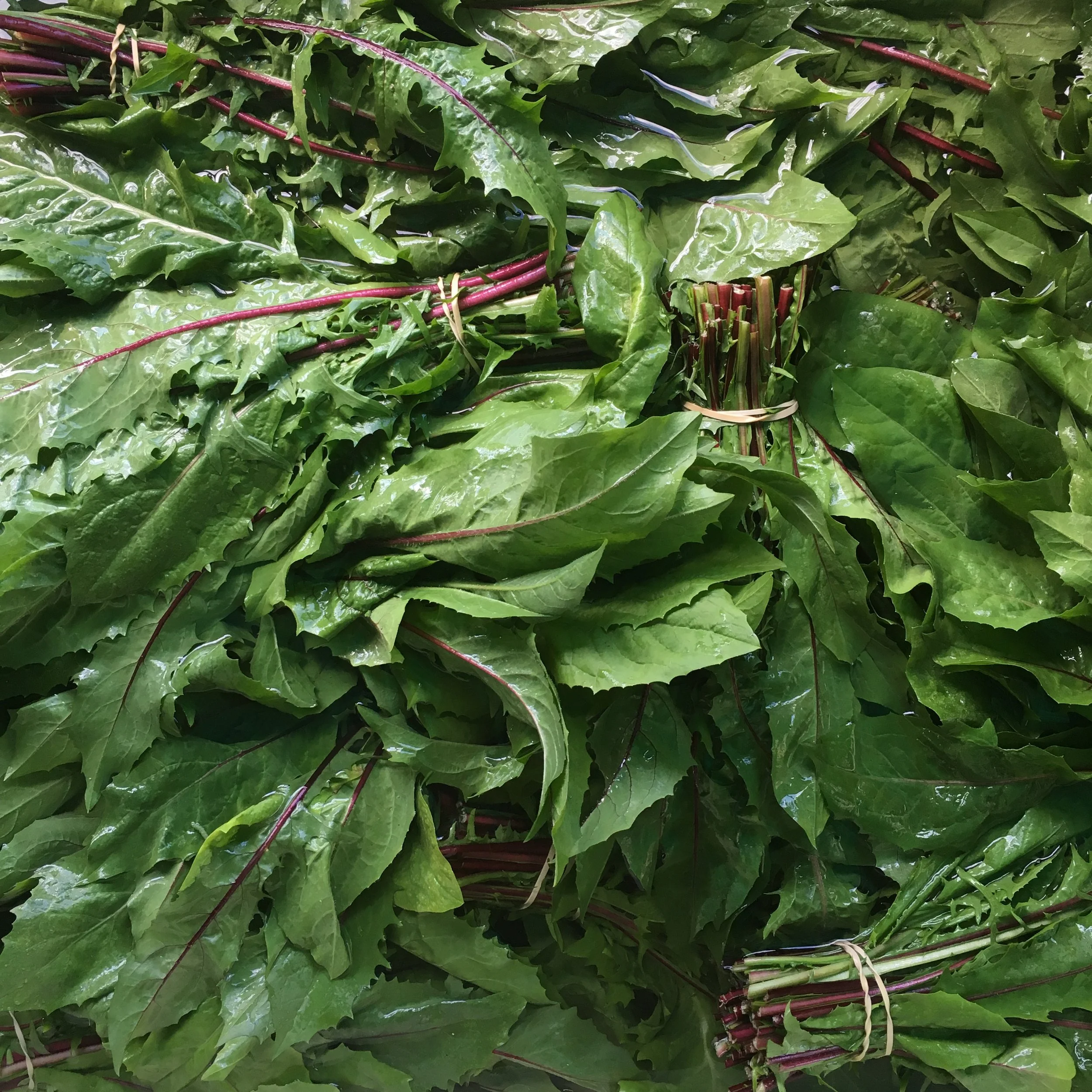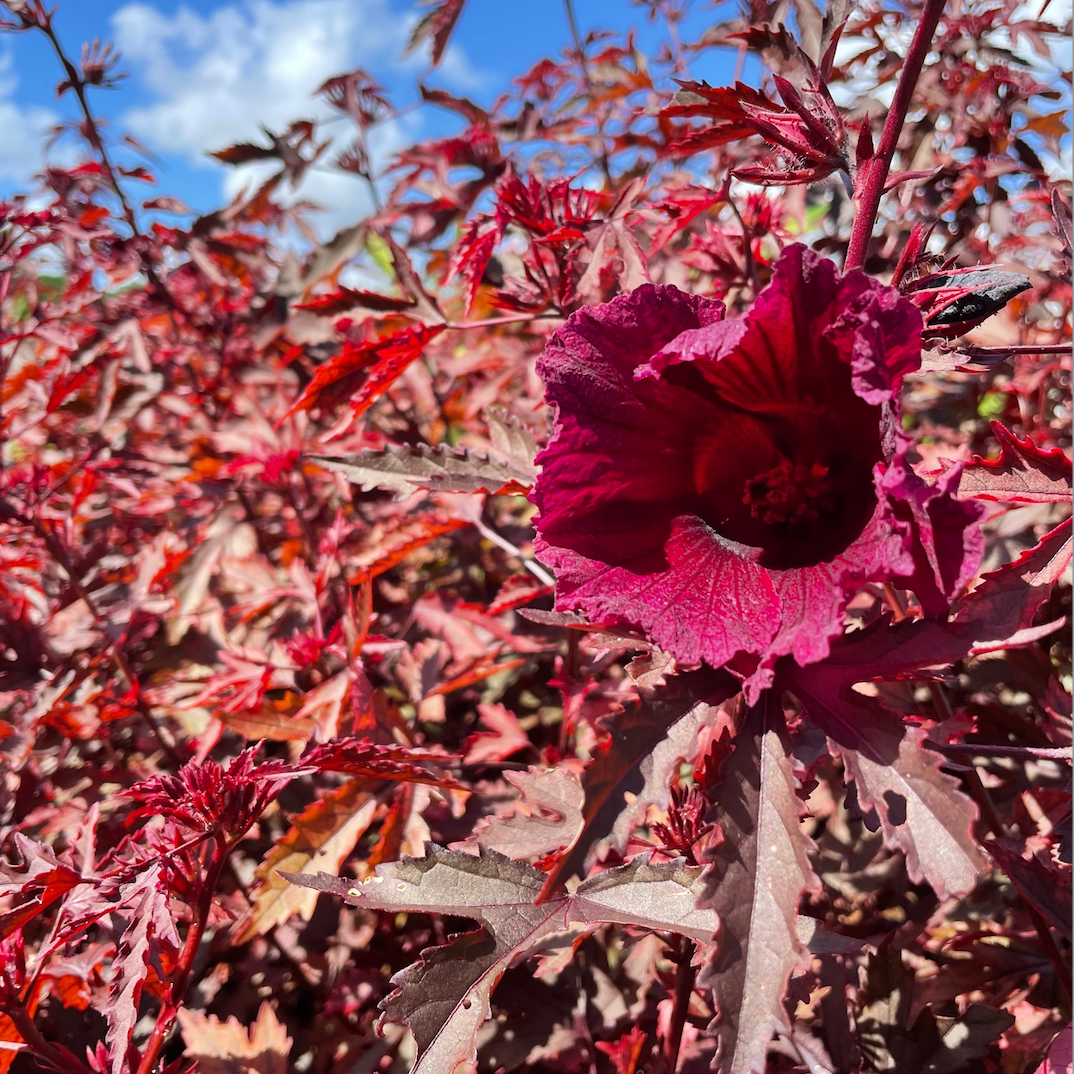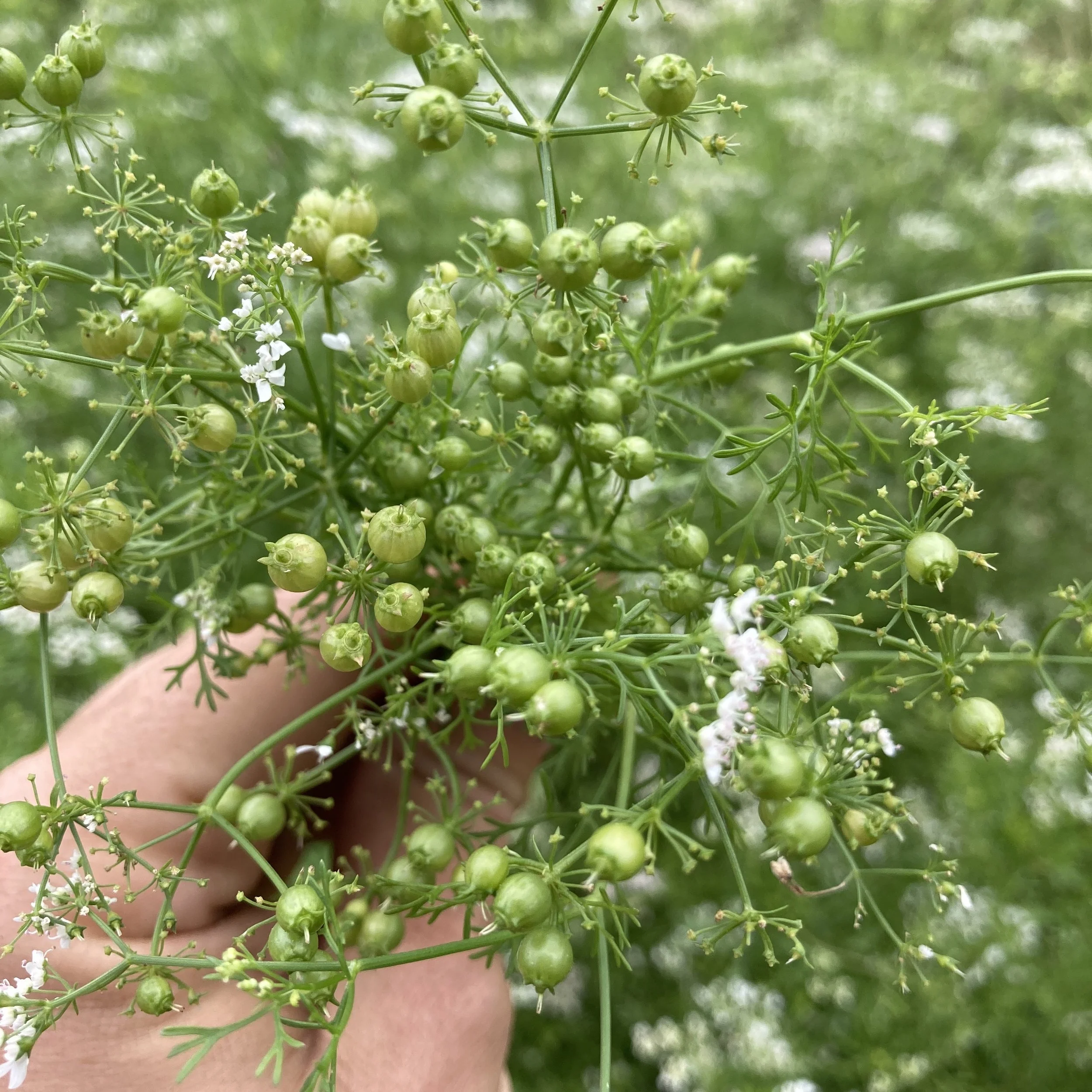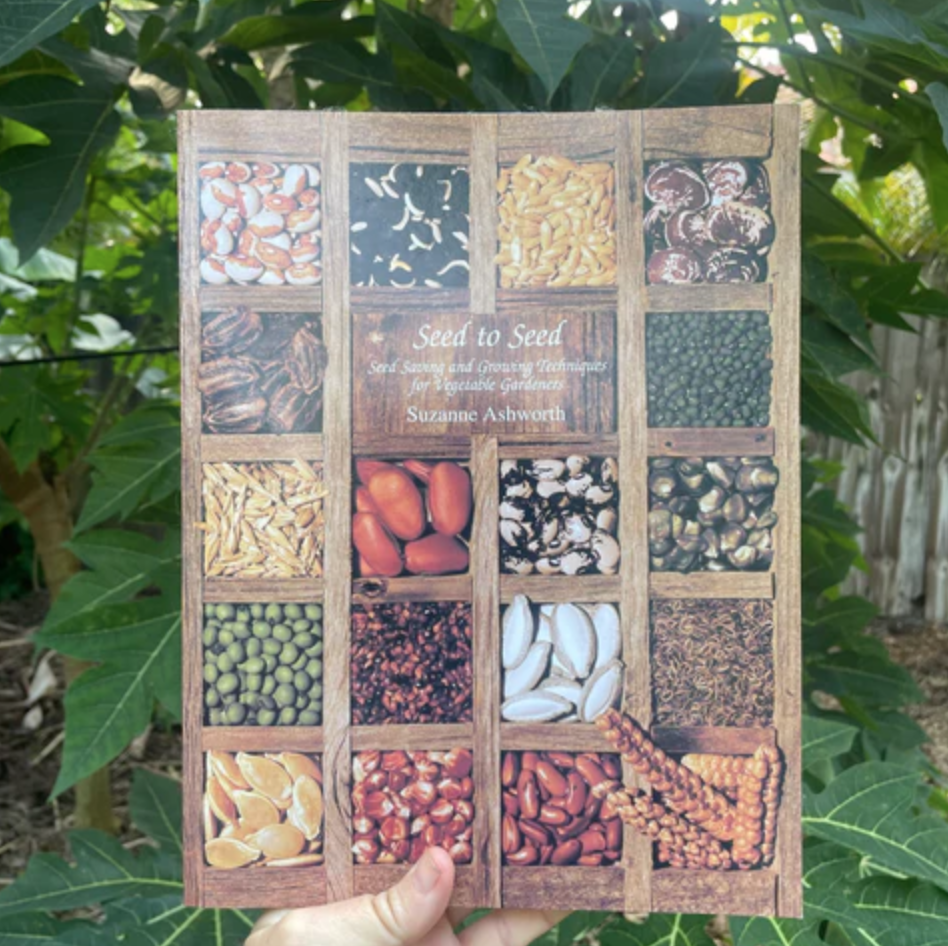April Gardening: Still Plenty To Do!
Here we are already in April, where did the season go!? We consider April one of the last opportunities to plant and harvest annuals before the summer comes and wipes them all out with its intense heat and rainfall. April is a great month to also plant transitional perennial crops that will survive into or through the summer if you have some space opening up in your garden. If you planted things like kale & tomatoes in the fall those plants might be nearing the end of their life cycle by now. Many home gardeners get a bit attached to their plants because they've cared for them for so long, so they don't want to pull them out (aka kill them), but annuals are meant to grow, produce flowers, fruit & seed, and then die (or be pulled out). We sometimes get comments from people like "my beans were doing so well, producing so much food for me, but then they just stopped and now they're just sitting in my garden for months not doing anything...whats wrong with them?" to which we respond: "theres nothing wrong with them, they're just done making you food! pull them out already!" So, pull it out already is definitely a theme of April gardening. It's not too late to remove a spent crop and plant something new, especially something quick growing, like asian greens.
"Asian greens" is a whole category of delicious and super easy to grow heat tolerant crops in the brassica family (the family that includes radishes, kale & broccoli) that we love planting this time of year. Many of these varieties are incredibly popular staple crops in other parts of the world but are relatively uncommon here in America. But remember, our unique climate is much like that found in Thailand and parts of India & Asia, so it makes sense that we would take inspiration from these areas when looking for unique heat tolerant crops. Since you may not have heard of many of these varieties let's go through some of them together.
Hon Tsai Tai
Hon Tsai Tai is a delicious and easy to grow green whose flavor profile is similar to broccoli, which is cool since many of the heat tolerant greens are spicy, but this one is sweet. The seeds can be planted in little bunches and the whole plant is edible at all ages so you can harvest the leaves young to eat them raw or let the plant mature and start flowering and eat the leaves, stalks and flowers then.
Tat soi
Tat soi is the closest thing we can grow to "normal" spinach, the arrowleaf kind you get in the grocery store, which hates the heat and does pretty poorly here all year round. Tat soi is technically a loose headed cabbage but it definitely doesn't look or cook like cabbage, so don't let that deter you. Leaves can be harvested at any stage of growth and you can harvest them "cut and come again" or let the whole plant get big and then cut the whole head, like you would bok choi. We grow a savoy leafed variety, which means theres extra crinkly texture, which we think is fun for cooking and for looks in the garden.
Tokyo Bekana/ Pei Tsai
Tokyo Bekana is one of our least popular plants but thats just because no one has heard of it before. Once a customer takes the leap and tries it they become a convert and start asking for it season after season. Tokyo Bekana is also a loose headed cabbage but its very very tender, so we like to refer to it as "tropical romaine". The leaves are very light, tender and delicate, but the ribs/ stalk is very crunchy and watery like the center of a romaine leaf, so that balances out the tender green in a really nice way. We definitely prefer to eat this one raw for that reason, and it stays tender even when fully grown.
Li Ren Baby Bok Choi
All bok choi varieties are heat tolerant and a good option for spring gardening, but over the years we've falling in love with 3 of them and grow them more regularly. Sure, we could stock like 100+ bok choi varieties but then we would need a whole other greenhouse for them! Li Ren is our favorite baby variety. Being a true baby bok choi means that we don't harvest it young, but rather it stays small when mature. So the choi in the photo above is no taller than our hand, but is fully grown and ready to come out of the garden. We plant these puppies about 6" apart since they don't get big, and you can really go for it and plant a whole little field of them in your garden if you'd like. These are best harvested whole (not leaf by leaf/ cut and come again) since they mature so quickly.
Joi Choi & Japonica
Joi Choi & Japonica are our two favorite extra large bok choi varieties and while they are similar in size and shape they are pretty different in flavor. Joi Choi is a super traditional mild, watery white stemmed pak choi, and japonica is more like a mustard and can be quite pungent. Both of them can be harvested leaf by leaf as they mature or you can let them become monsters and then pick the whole thing, but be careful cause they definitely wont fit in your fridge! These beauties are best suited to people who eat lots of greens and know how to handle the volume. Sometimes we get questions from customers about "eating leaves", like... how do you do it! We eat so many different leaves that its like... how do you not do it! You can cook any of this stuff like you would kale or swiss chard.
Mustard Greens
Mustard greens is a general term that applies to all of the cultivated greens in the brassica family that come from the wild mustard grandparent. it includes arugula, the most well known mustard green, but also tons of other colors, shapes and textures of mustard too. The leaves all have a spicy flavor, like arugula does, which gets more intense as they mature. A mix of colorful and flavorful baby mustard leaves makes a really cool salad, and if you let the plant get larger you'll want to cook, stew or sautee the leaves to settle their flavor down and soften their texture. Mustard greens are even used as a cover crop at some farms, and of course if you let them flower and collect the seeds you can make your very own mustard!
Dandelion
We grow dandelion pretty much year round, but it gets more popular in gardens this time of year since the pickings of sweet greens is slimmer. Dandelion definitely deserves a spot in your garden if you consider yourself a healthy eater. Bitter greens are very good for your body and for your digestive system, but people have bred bitterness out of their cultivated foods because they don't like the flavor. In Greek cuisine bitter wild greens are made into a dish called "horta" where they are blanched in water, and then sauteed in olive oil and lots of lemon. The key to making this dish tasty is the blanching part, because it mellows out the bitterness of the dandelion.
Cranberry Hibiscus
Cranberry hibiscus is known for being a deep summer green but we threw it in this spring rundown because its so fun and tasty and beautiful and theres no reason to not grow it now. This plant is different from all of the above because its a shrub, so it'll get pretty big! it also doesn't need to go in your raised bed, you can plant it in your yard like you would an ornamental hibiscus. The beautiful red maple-shaped leaves are not just edible they're also tasty! they have a tart lemony profile and the tiny ones can be thrown in salads whole, while the large ones might need to be chopped up. This plant will thrive all the way through fall and it takes well to pruning so you can keep it smaller if you need to by just being aggressive with pruning new growth.
Seed Saving:
Another fun garden activity that is unique to spring is the harvesting and saving of seeds from your plants. Many plants that you might not think make seeds will definitely do so if you leave them in your garden long enough, or if you treat them just a little bit differently. Let's take the medicinal flower calendula as an example.... If you're growing calendula in your garden you are likely harvesting all of the blooms and saving them for medicinal use. Well, if you leave a few flowers on the plant then they will get pollinated, die and turn into seeds! Let the seeds dry on the plant (that means they have fully matured and will be the right age for germination when you are ready to plant them) and then store them in a jar in the dark until next season. Saving your own seeds is an important part of becoming a self sufficient and resilient gardener. While we specialize in selling people plants and seeds we are always thrilled to see people move away from relying on us for materials and into relying on nature and their own garden to generate what they need. And then when they generate abundance, especially in the form of saved seeds, sharing it with their community. Miami Seed Share is a local non profit project that collects and gives away saved seed (through seed libraries and different spots throughout the city), check them out on instagram if you have seed you'd like to donate.
These bronze fennel seeds are ready to be harvested for seed, you can tell because the whole flowering cluster has turned dry and brown.
These cilantro seeds are not ready yet because they are still green. Wait until they turn brown to remove them from the plant and save for next year.
If left on the plant many flowers & fruits will make mature seeds, all it takes is some patience. Each plant family will make useable seeds in a different way, so the best way to figure out how to save lots of different seeds is to get a guide book, like "Seed to Seed", which is a bit of a seed saving bible. You can also use seeds in a culinary way! The herb cilantro has so many useable parts including its fresh and dried seeds, which are referred to as "coriander" but are just cilantro seeds! Dill seed, arugula seed (which is called mustard seeds, like what you make mustard out of!), and nasturtium seeds are all edible and useful in the kitchen, so you can also stock your pantry during spring before composting your spent plants.
Composting:
Farmer Chris at French Farms shows visitors his simple compost pile. its made from layers of old plants, unuseable produce and horse bedding with manure.
Spring is a good time to start a compost pile if you don't already have one for two reasons. No, three reasons! Reason one is that many of our local tree species (like oaks and black olives) are losing their leaves now, and leaf litter is a super valuable (but free and abundant) ingredient in compost. Leaf litter breaks down faster than woody mulch, is full of minerals that the tree removed from the soil, and they are a great environment for microbial & fungal life forms to thrive in. Reason two is that as you empty your garden out of spent crops you'll get to make use of them if you add them to a compost pile. Plants added to a compost pile fresh are referred to as "greens" and they contain lots of nitrogen, a key ingredient for plant growth. Layering greens and browns (dried stuff like mulch, hay, cardboard and our friend leaf litter) is how you make a healthy and balanced compost pile, so spring has lots of greens and browns for you to divert from the waste stream and turn into future plant food. The third reason is that summer is the best season for composting because the microbial, fungal & insect life that makes composting happen (basically life forms eating detritus and pooping it out) is at its peak during the hot and sunny months of summer. If you start a compost pile now it'll be eaten and pooped out a hundred times through the summer leaving you with a much smaller but very precious pile of "black gold" that will be ready in time for fall planting. See how that all works?! Its the cycle of life in your home veggie garden!
So get out there and enjoy the new and exciting crops (asian greens!) and yields (saved seed, future compost) that the spring garden has to offer.


